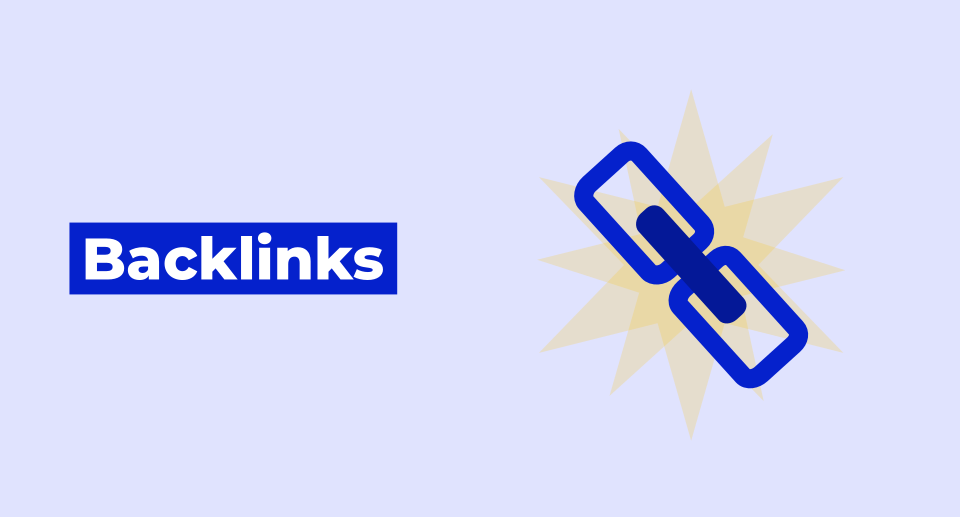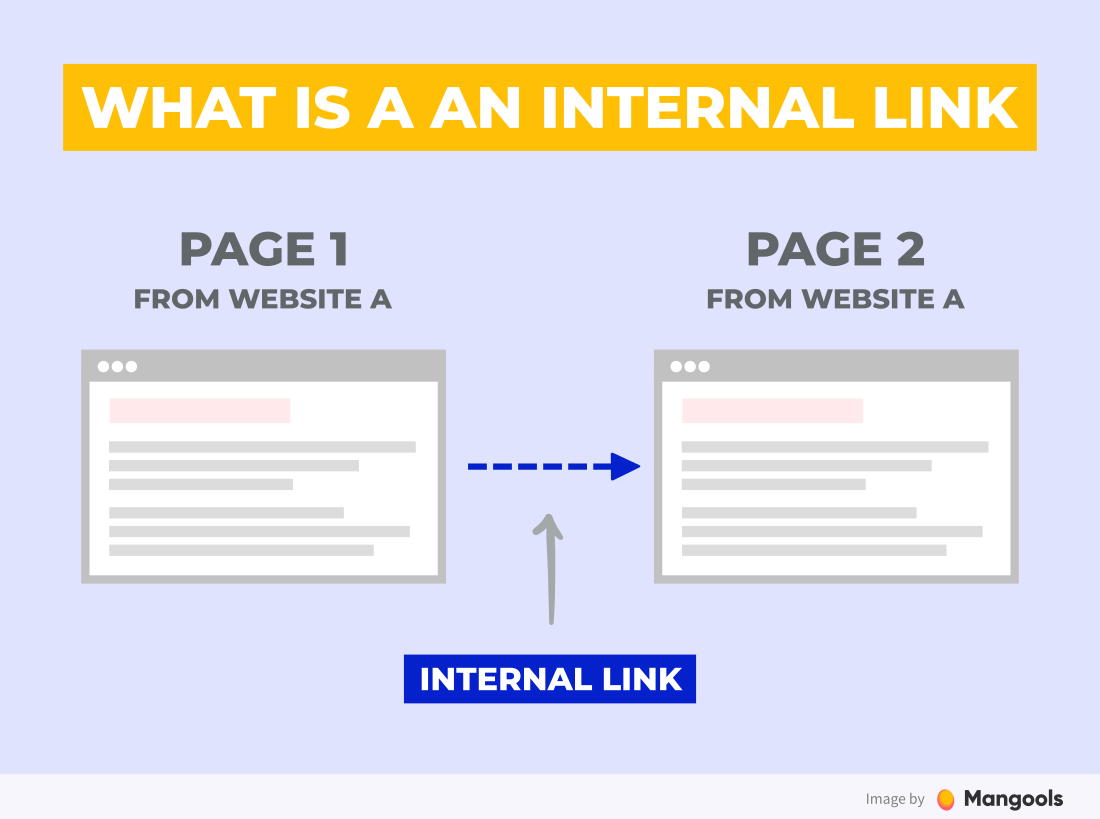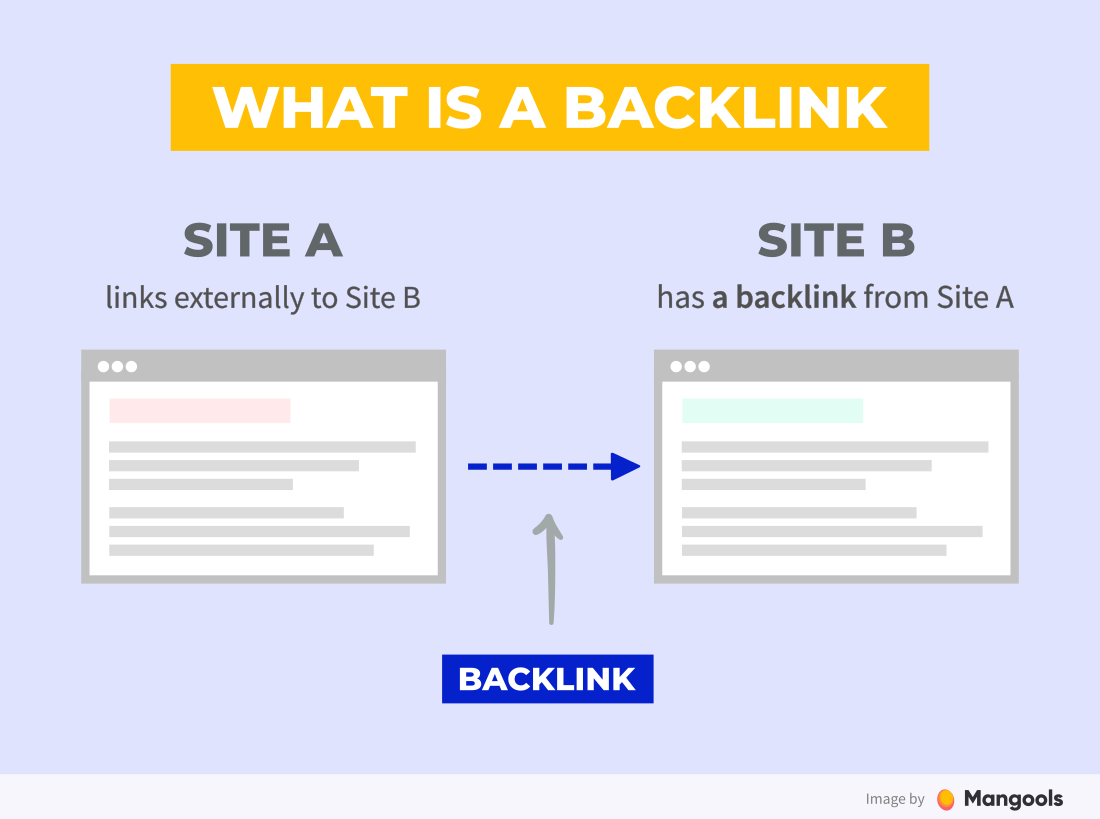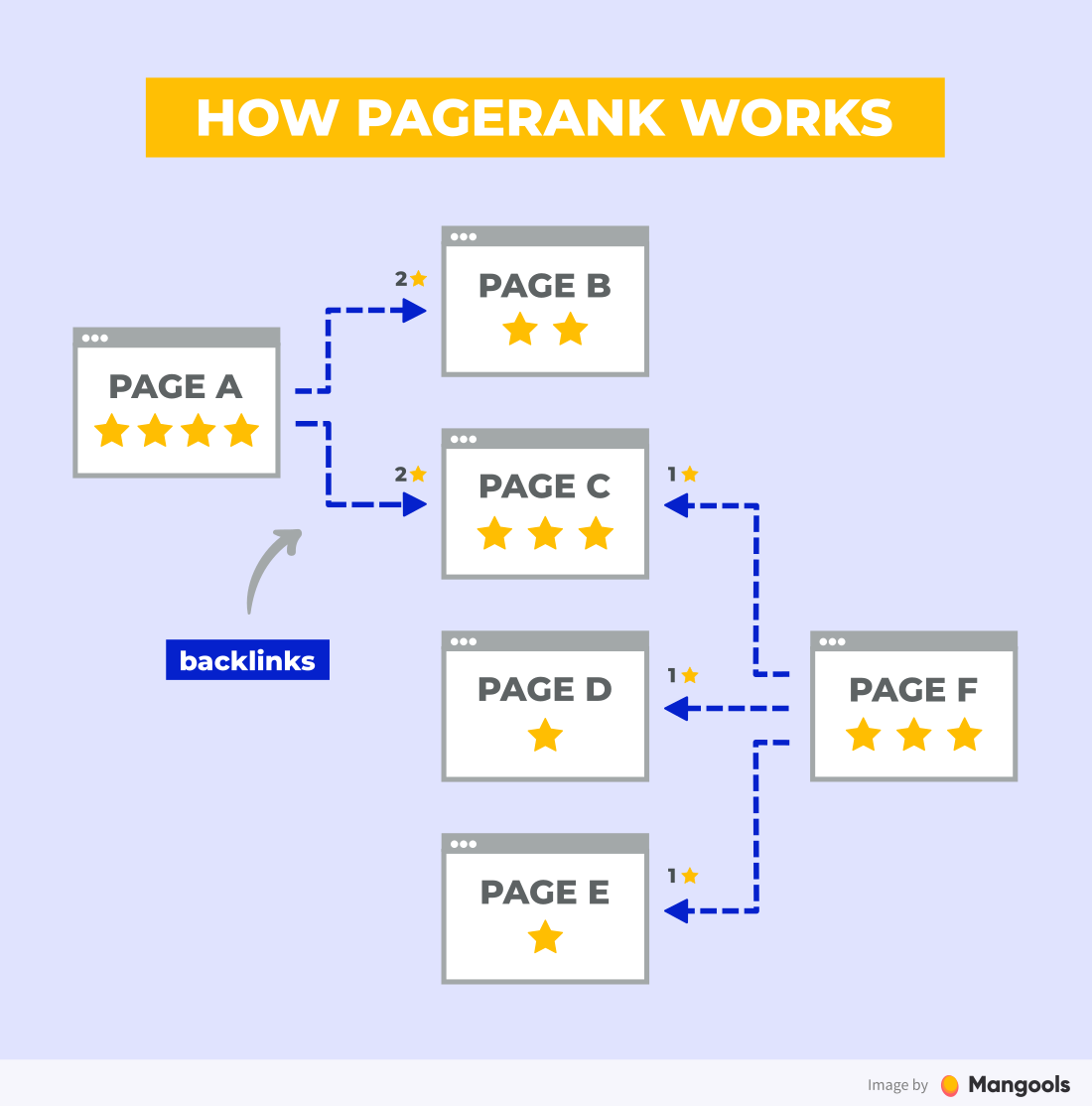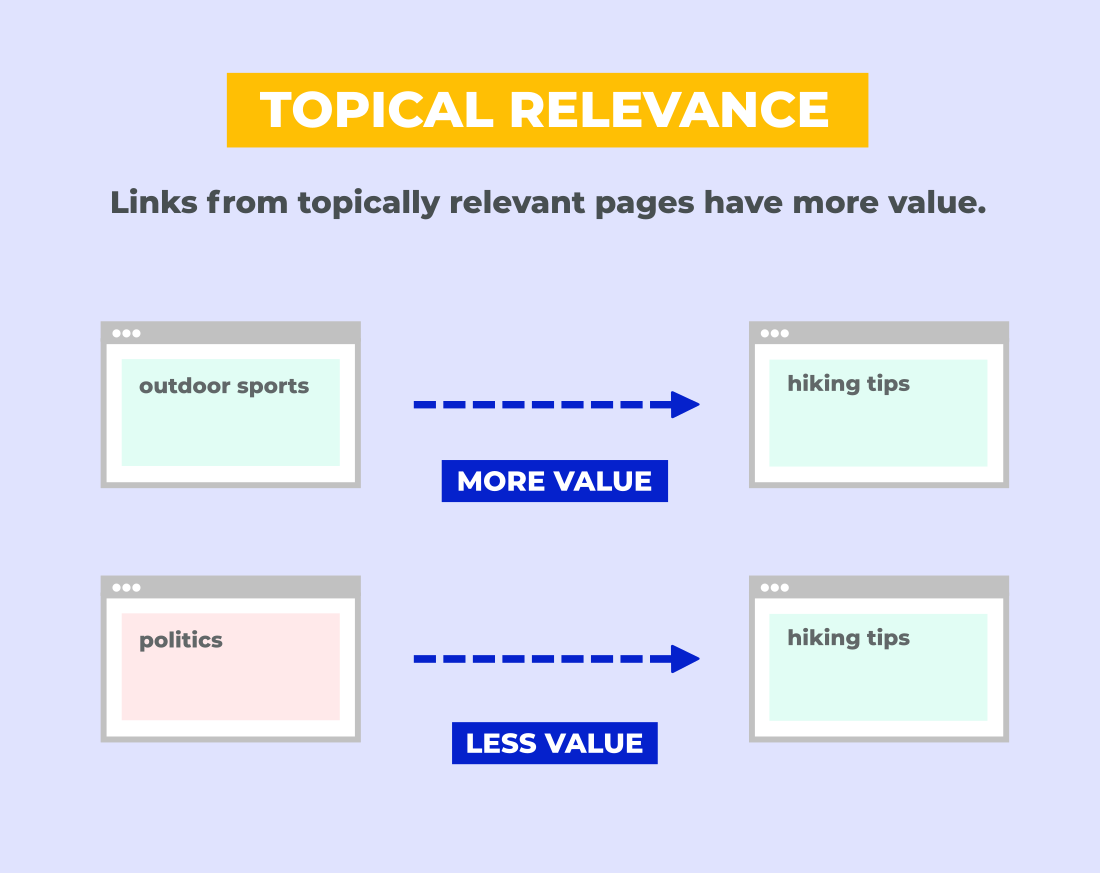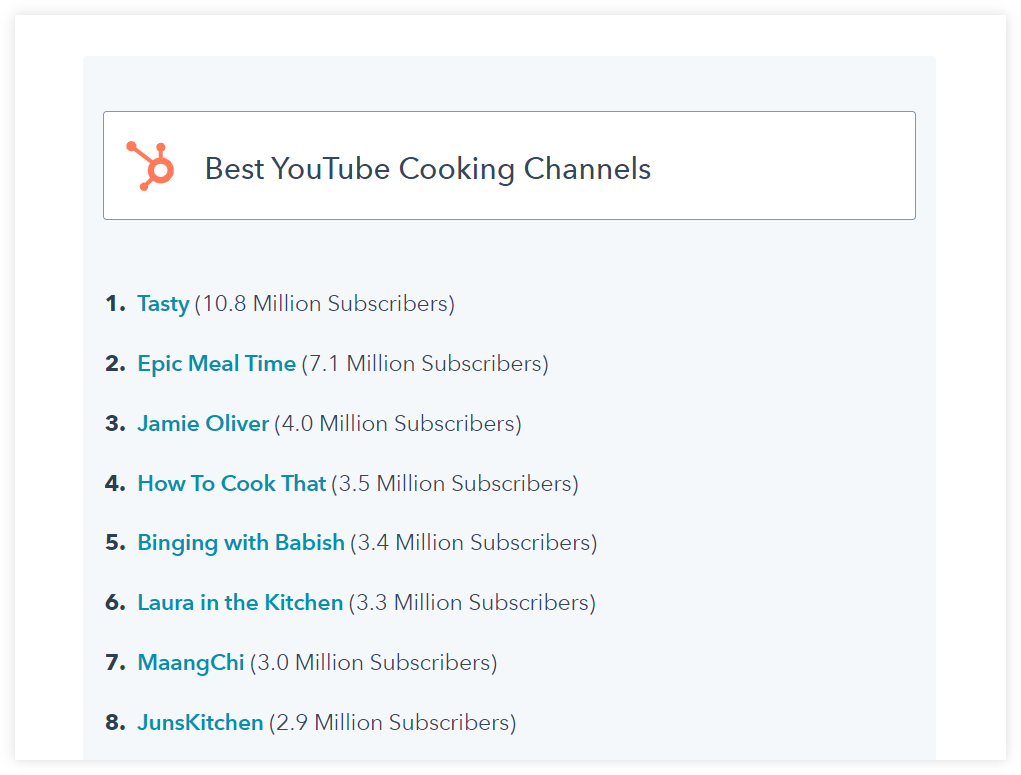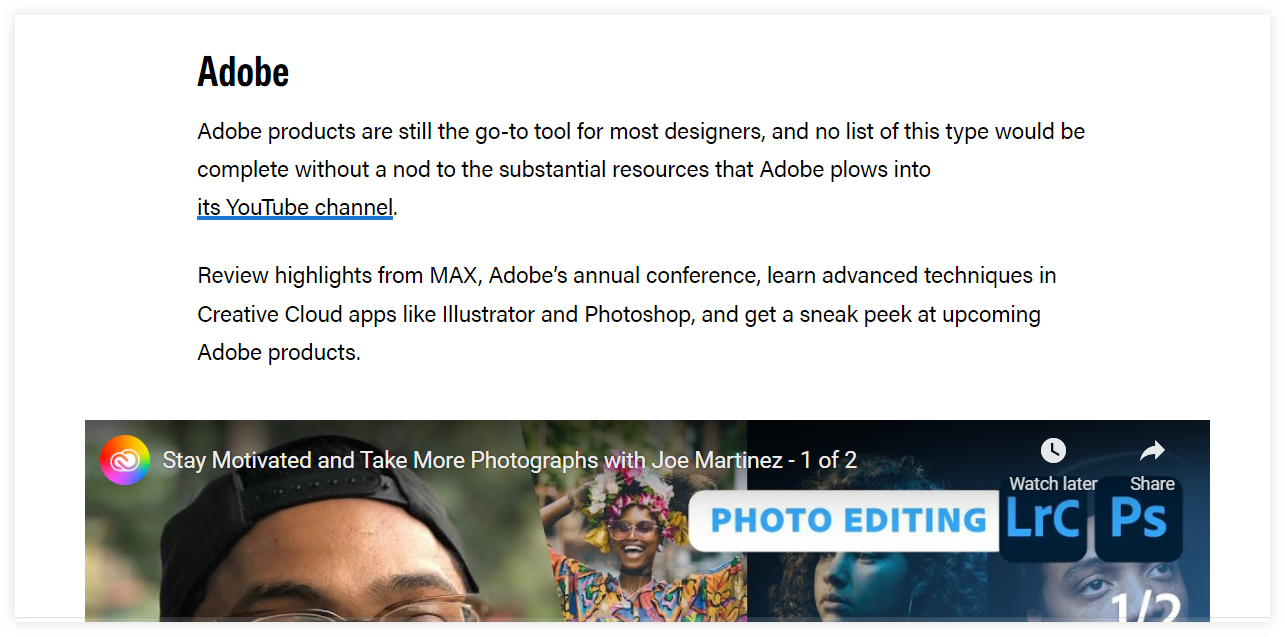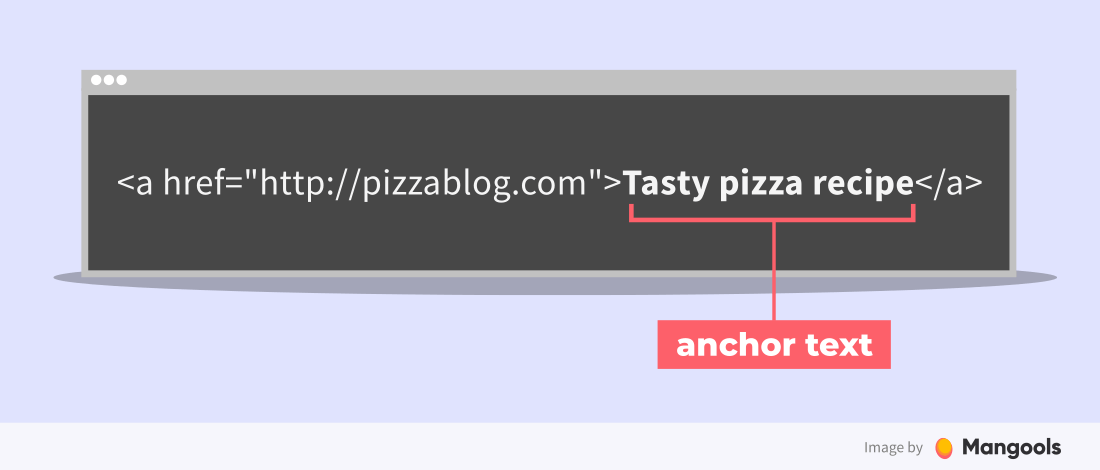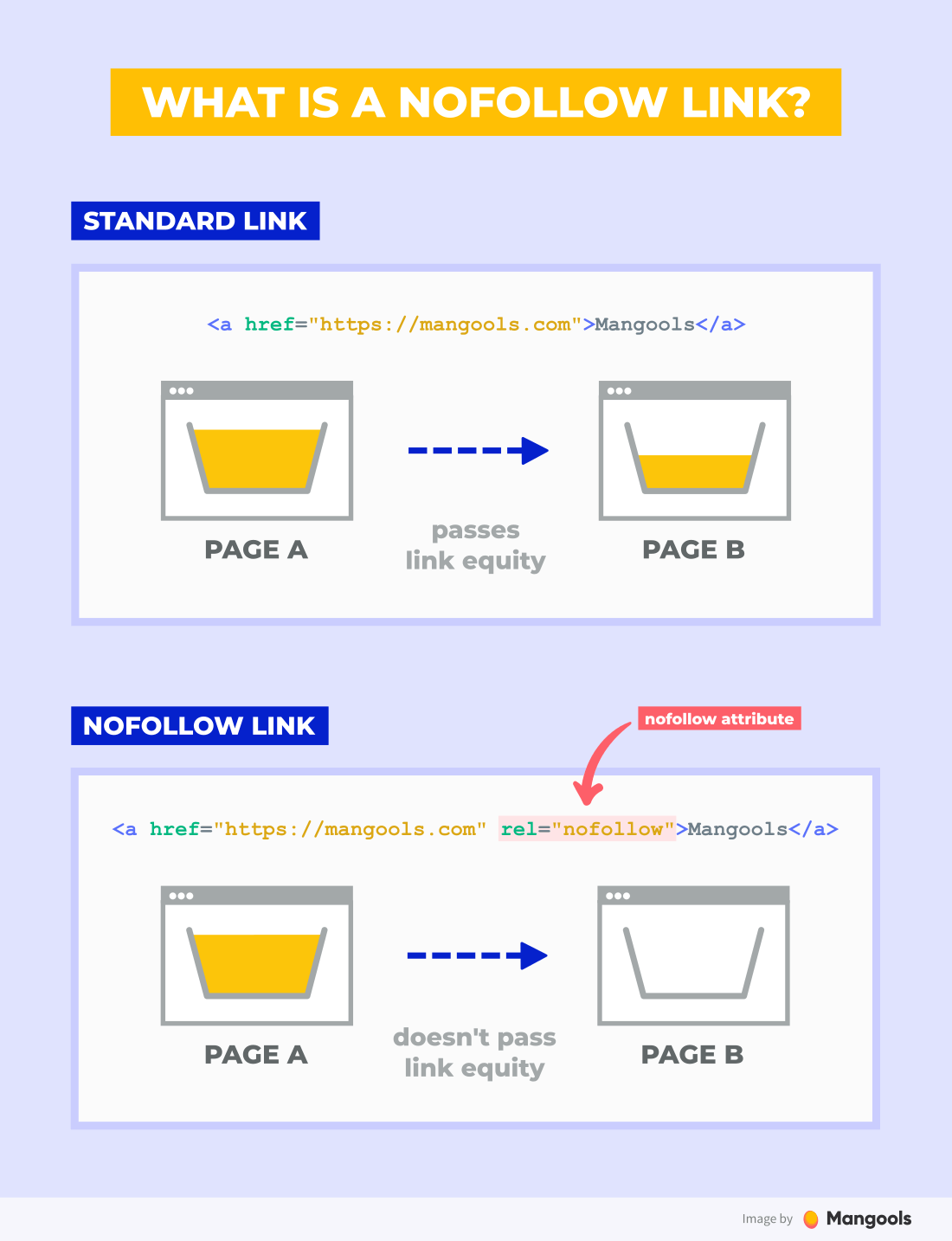What is a backlink?
A backlink, or inbound link, is a link on a website that points to a page on a different website. Backlinks are one of the strongest ranking factors and, as such, play a big role in the search engines optimization process.
Internal links vs. external links vs. backlinks
Website links generally fall into two categories: Internal and external.
An internal link is one that points to a page on the same website:
An external link is one that points people to a page on another site.
The linking site refers to this kind of link as an external link. However, the site that’s linked to refers to it as a backlink as traffic is being driven to them from a link on another website:
So, an external link and backlink are the same thing. It just depends on the point of view.
Why are backlinks important for SEO?
High-quality backlinks can do a lot of good for the linked-to source:
Discoverability
Search engines discover more rank-worthy pages as they analyze backlinks on already established authoritative websites. It can take awhile for Google to index and rank a lesser-known page that’s organically optimized, so backlinks can help speed up the process.
Authority
Linking websites pass down some of their “authority” (also called link equity, or “link juice”) through backlinks. If it’s a high-quality backlink, it can help improve the linked-to site’s ranking. Low-quality backlinks, on the other hand, can have a negative impact on the site’s reputation and ranking.
Are backlinks a new thing in SEO?
Backlinks have long served as a ranking factor for Google.
Google’s first search algorithm, called PageRank, relied heavily on the number of backlinks a web page had. PageRank used formula for scoring backlinks that could determine the importance of a web page.
When Google caught wind of people using unethical link building schemes to boost the number of inbound links they received, it updated its algorithm to deal with the web spam.
Between 2012 and 2016, Google began to use the Penguin signal to weed out poor quality sites. In other words, those that were using black hat SEO, which included manipulative link building tactics.
In 2016, Penguin officially became one of Google’s over 200 ranking signals.
These days, backlinks continue to play an important role in SEO. Although PageRank is still part of its algorithm, Google and other search engines also closely examine the quality and origin of backlinks to ensure that they aren’t unethically obtained. Websites found to have done this are either penalized or their backlinks completely ignored.
Quality of links vs. quantity of links
John Mueller of Google was recently asked:
“What matters the most: The number of unique referral backlink domains or the total number of backlinks?”
https://youtube.com/watch?v=zCV6tEt3w0k%3Fstart%3D1628
If you start listening around the 27-minute mark, you’ll hear his response. It’s the end of his answer that’s especially important to note:
“The total number doesn’t matter at all because you can go off and create millions of links across millions of websites… and we could just ignore them all. Or there could be one really good link from one website… that is, for us, a really important sign that we should treat this website as something that is relevant.”
While the original question had to do with the number of unique domains versus the number of backlinks, Mueller brushes the matter of quantity aside completely. What matters most is the quality of backlinks.
And Google relies on a number of attributes to determine the quality of a linking domain.
What are the attributes of a high-quality backlink?
There are a number of backlink traits that search engines look for when determining its quality:
1. Topical relevance
There should be an obvious relationship between the referring URL and the linked-to web page.
For example, a wedding planning website would probably have backlinks from websites for:
- Jewelers
- Printing companies
- Event vendors
- Fashion magazines
- Travel agencies
The search engines want to see this type of direct correlation between the linking site and the linked-to site.
That said, a relevant backlink doesn’t always have to come from a related company or within the industry.
For instance, listicles and review sites often cover a large breadth of companies and services. So long as the backlink actually fits within the context of the page (e.g. “5 top wedding checklist templates”), that’s all that matters.
2. Authority
The authority of the linking website is also an important attribute.
The easiest way to measure the authority of a referring domain is by looking at its domain or page authority score.
There’s no official metric by Google but you can use substitutes by various SEO tools – for example the DA and PA metrics by Moz. On a scale of 1 to 100, this score will tell you how credible this source is in the eyes of the search engines when it comes to backlinks.
3. Uniqueness
Remember that John Mueller question from above?
“What matters the most: The number of unique referral backlink domains or the total number of backlinks?”
This question treats uniqueness as a matter of quantity. The truth is, it’s more related to the quality of a backlink.
A unique backlink is one that comes from a domain that hasn’t linked to the page before. This matters because it establishes the genuine popularity of the web page.
Think about it like this:
A page that has 1,000 backlinks and 50 linking sites.
vs.
A page that has 1,000 backlinks and 1,000 linking sites.
So long as those sites are equally authoritative and the content just as relevant, 1,000 unique referrers sends a much stronger signal about the quality of that page than 50.
4. Placement
The placement of a backlink tells search engines a bit more about the link itself and how valued it is on the referring website.
For example, HubSpot has a post called The 100 Best YouTube Channels in Every Category. The page is nothing more than a brief intro and a long list of links:
A backlink on the HubSpot website might be good for increasing visibility. However, if the link is buried within a list of 99 other links, its backlink value is going to diminish.
In order for web pages to really benefit from backlinks, a more prominent placement and emphasis on the page is needed.
WebDesigner Depot’s post 10 Must-Watch YouTube Channels for Web Designers is a good example of this:
Each backlink gets its own dedicated section, accompanying description, and graphic.
5. Anchor text
Anchor text is the visible text of a backlink:
Anchor text ratio refers to how evenly distributed the anchor texts are within a web page’s backlink profile.
For example, let’s say you’ve built a website for your productivity app called Work It. To determine your anchor text ratio, search engines will look at the anchor text types used, like:
- Keyword: “productivity mobile app”
- Branded: “Work It”
- Naked URLs: “https://workitapp.com”
- Call-to-action: “Start Now”
- Generic: “here”
Most of the time, backlinked websites have no say over what type of anchor text is used. While the ideal anchor text would be keyword-rich or even branded, it’s natural to expect a good mix of anchor text types in the ratio.
Be careful with over-optimizing anchor texts
Another thing the search engines look at is the anchor text itself. When the anchor text looks the same from referral site to referral site, or all of the anchor text revolves around hyper-targeted keywords, it’s going to look unnatural.
If the search engines suspect that a web page has acquired backlinks through a link-building scheme, it may penalize the backlinked website. Either that or it’ll ignore the over-optimized backlinks entirely.
6. Followed links
The last trait to look for in your backlink is whether or not it’s a follow link or a nofollow link.
Regular (sometimes called “follow” or “dofollow” links) allow websites to pass their link juice onto linked-to web pages. Nofollow links, on the other hand, do not.
Should I buy links?
No.
John Mueller was recently asked a question related to buying links. You’ll hear his response around the 1-minute mark in this Google SEO office hours video:
https://youtube.com/watch?v=mPaRgzaMroU%3Fstart%3D65
In a nutshell:
“Artificially building links, dropping links on other sites, buying links, all of that is against the webmaster guidelines. And we take action on that algorithmically; we take action on that manually.
And the actions that we take include demoting the site that is buying the links, demoting the site that is selling the links. Sometimes we also take more subtle action in that we just ignore all of those links.”
Link building is not a numbers game. At least, Google has made sure that it’s not anymore by implementing the Penguin algorithm and actively discouraging site owners from participating in these deceptive link schemes.
If you want to build more backlinks, your SEO strategy should first focus on creating great content and then to actively earn and build backlinks.
Should I actively build links?
Yes!
You can and should create high-quality content and visual assets like infographics and videos for your site so other sites have link-worthy pages to share.
That said, you should actively work on building links, too. By taking a more hands-on approach to backlink building, you can better control the health of your link profile.
There are a lot of different link building techniques to use to ethically earn backlinks and create new opportunities for them. For example:
- Submit your listing to a local or niche directory
- Use LinkMiner to reverse engineer competitors’ backlinks and pitch your own to relevant sites
- Find mentions of your website without a link and reach out and request one
- Pitch your website or resource to a relevant roundup post
- Write guest posts for high-authority publications in your niche


